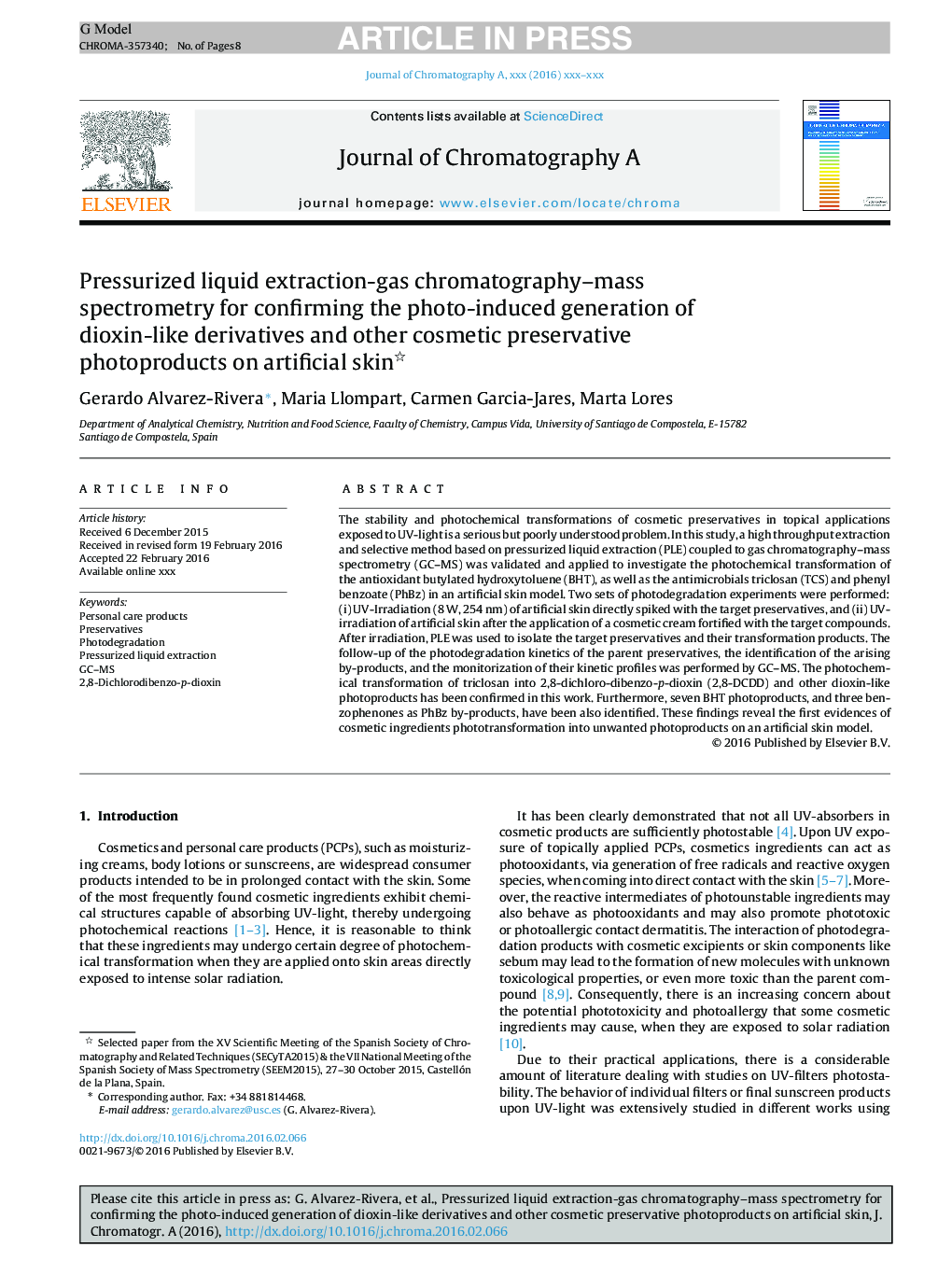| Article ID | Journal | Published Year | Pages | File Type |
|---|---|---|---|---|
| 7610104 | Journal of Chromatography A | 2016 | 8 Pages |
Abstract
The stability and photochemical transformations of cosmetic preservatives in topical applications exposed to UV-light is a serious but poorly understood problem. In this study, a high throughput extraction and selective method based on pressurized liquid extraction (PLE) coupled to gas chromatography-mass spectrometry (GC-MS) was validated and applied to investigate the photochemical transformation of the antioxidant butylated hydroxytoluene (BHT), as well as the antimicrobials triclosan (TCS) and phenyl benzoate (PhBz) in an artificial skin model. Two sets of photodegradation experiments were performed: (i) UV-Irradiation (8Â W, 254Â nm) of artificial skin directly spiked with the target preservatives, and (ii) UV-irradiation of artificial skin after the application of a cosmetic cream fortified with the target compounds. After irradiation, PLE was used to isolate the target preservatives and their transformation products. The follow-up of the photodegradation kinetics of the parent preservatives, the identification of the arising by-products, and the monitorization of their kinetic profiles was performed by GC-MS. The photochemical transformation of triclosan into 2,8-dichloro-dibenzo-p-dioxin (2,8-DCDD) and other dioxin-like photoproducts has been confirmed in this work. Furthermore, seven BHT photoproducts, and three benzophenones as PhBz by-products, have been also identified. These findings reveal the first evidences of cosmetic ingredients phototransformation into unwanted photoproducts on an artificial skin model.
Keywords
Related Topics
Physical Sciences and Engineering
Chemistry
Analytical Chemistry
Authors
Gerardo Alvarez-Rivera, Maria Llompart, Carmen Garcia-Jares, Marta Lores,
